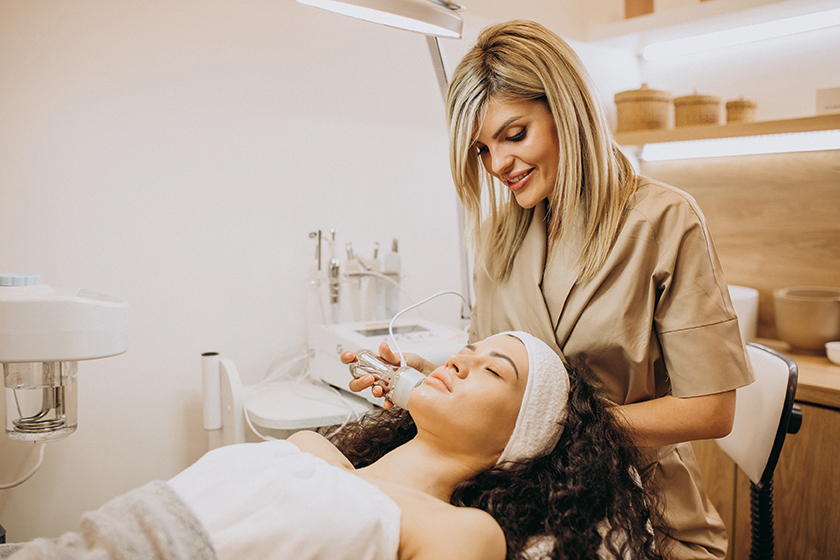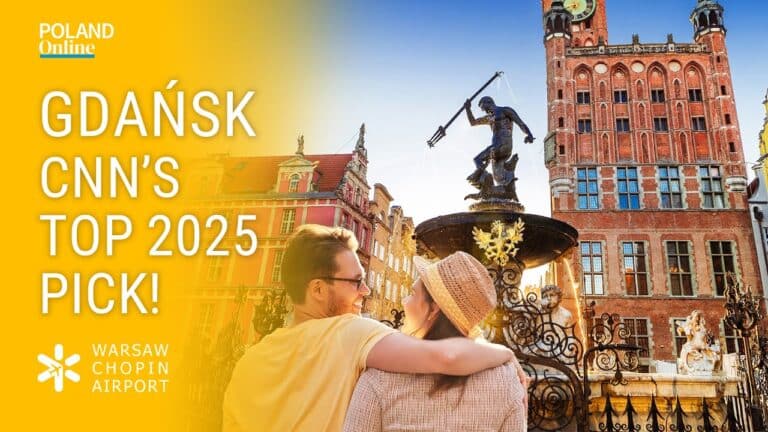BEST Medical Services for Foreigners
Poland – A Key Destination on the Medical Tourism Map
Over the past two decades, Poland has undergone a rapid transformation in the field of medical services. Today, the country is seen not only as a land of rich history and culture but also as a dynamically growing hub for private healthcare. An increasing number of foreign patients are choosing Poland for medical treatment, taking advantage of high-quality services at prices much lower than in their home countries.

Fields such as dentistry, aesthetic medicine, and plastic surgery particularly stand out due to their professional excellence and advanced technology. Polish medical staff offer treatments that meet global standards, often using the latest technologies and procedures. More and more private clinics now offer full support for foreign patients—from assistance with travel and lodging to native-language service and help with insurance claims.
This holistic approach makes receiving treatment in Poland not just cost-effective but also comfortable and safe. “Changing economic realities and increasing social mobility are prompting more clinics to tailor their services to international patients. In Poland, the medical services sector for foreigners is growing rapidly—not just in general medicine, but also in specialties like aesthetic medicine, orthopedics, and dentistry. For many, coming to Poland for treatment is not just about saving money, but about accessing high-quality care, modern equipment, and highly trained staff. Clinics are recognizing this trend and increasingly offer full-service experiences for foreign patients—from medical interpreters to multilingual service and comprehensive packages covering accommodation and post-op care,” says Joanna Gołębiewska, CEO of Lensomai Communications.
Dentistry – The Foundation of Poland’s Medical Tourism
Dentistry is the most popular service chosen by international patients. Modern Polish clinics provide a full range of treatments—from preventive and restorative care to oral surgery and advanced implantology and prosthetics.
With technologies like 3D CT scans, Digital Smile Design (DSD), and immediate-load implants, Polish specialists deliver world-class services. However, as Dr. Barbara Sobczak, founder of Dr. Sobczak Clinics, points out, price is no longer the only factor.
“Foreigners come to Poland not just for affordable care, but for quality—and they find it. Polish dentistry, especially implantology, is top-notch. We have outstanding doctors, state-of-the-art equipment, and advanced technologies, coupled with excellent treatment organization. Patients value comprehensive care, clear communication, and short wait times. In my clinic, we often begin treatment before the patient even arrives—based on scans and records they send in advance. This is the model expected by discerning international patients,” emphasizes Dr. Sobczak.
“Price may be the initial trigger, but it’s not the dealbreaker. They come because they know they’ll receive care on par with the best clinics in Europe or the Middle East—often in less time and with better service. We offer digital diagnostics, precise smile planning, and an interdisciplinary team of specialists. Treatment in Poland is no longer just a service—it’s an experience. And that’s what attracts patients from all over the world.”Recent data confirms the dynamic growth of medical tourism in Poland. In 2017, over 170,000 international patients received treatment in Poland. By 2023, the value of the private medical services market increased by PLN 4.5 billion.Countries with the highest patient numbers include Germany, the UK, Sweden, Norway, and Ireland. Interest from the US and Canada is also rising. According to the Institute for Medical Tourism Research and Development, in 2018, 90,000 foreigners were treated by Polish dentists, mainly from Norway, the UK, and Germany. Additionally, 55,000 visited Polish health resorts (mostly Germans), 25,000 had plastic surgery, and 12,000 underwent hospital treatment in Poland.
“The biggest interest comes from patients seeking full treatment plans—including complete bite restoration and smile makeovers. Many suffer from edentulism. They know they can receive their new ‘third teeth’ on implants—without artificial gums—in a single day. For many patients from London, Oslo, or Dubai, speed and quality are the deciding factors, and the treatment becomes a well-planned investment,” adds Dr. Sobczak.“Reputation matters—not just of the clinic, but of the doctor. Foreigners look for internationally experienced experts who also teach, publish, and speak at conferences. They check reviews, request certifications, and follow us on social media. The level of organization—from registration to logistics to post-op care—is critical. It’s a huge value for international patients,” she concludes.

Aesthetic Medicine – High Quality and Safety
The second pillar of Poland’s appeal to foreign patients is aesthetic medicine and plastic surgery. Clinics offer a wide range of procedures—from non-invasive treatments using botulinum toxin, hyaluronic acid, or fractional lasers, to surgical face, breast, and body operations.Highly qualified doctors—often with international training and internships in Western Europe and the US—attract patients looking for safe, effective solutions. Many regularly attend international conferences, adopting cutting-edge techniques. Clinics are well-equipped, enabling them to perform procedures on par with the best Western European facilities. Poland also places a strong emphasis on safety—clinics must meet strict sanitary and epidemiological standards, and many doctors belong to international medical associations (e.g., ISAPS – International Society of Aesthetic Plastic Surgery).“Aesthetic medicine in Poland is, in my opinion, at
a very high level. We’re on par with other European countries, which I see while attending international congresses. Polish doctors are excellent theorists and talented practitioners. And prices in Poland are still lower than in England, France, or Germany—this probably explains the interest from abroad,” says Dr. Karolina Ziemlewska of Klinik Ziemlewski.Patients get top-tier treatments for a fraction of the price—without compromising results or safety.“We remain competitive in euros and pounds. We use only the best, proven products and therapies—many of which are unfamiliar to patients from other markets. We specialize in specific procedures, not everything. Though foreigners make up a small percentage of my patients, they tend to be repeat visitors who plan ahead and get multiple treatments during one stay. They don’t ask about the cost—it’s already lower than at home. Usually, they come from Western Europe. I think it’s a matter of aesthetic values—natural results are trending in this part of Europe, and so is prevention and stimulation through autologous treatments,” she adds.
Poland is also an attractive tourist destination. Clinics often provide full services—airport transfers, accommodation, and relaxation packages in SPA hotels.
“Poland is an appealing option for foreigners seeking aesthetic medicine. Travel from Paris, Berlin, or London takes just a few hours. We have great airport connections in Katowice, Kraków, Warsaw, and Radom. I have a patient from northern Poland who spends more time getting to me than another patient who flies in from London,” says the owner of Klinik Ziemlewski. Satisfied patients often recommend Polish clinics to others or return for more treatments. Poland’s image as a safe, professional treatment destination continues to strengthen, fueling new waves of “aesthetic tourists.” “My foreign patients usually learn about me through referrals or my Instagram or Facebook. Social media is a powerful engine. I use it to educate, share honest feedback, and highlight both the ups and downs of aesthetic medicine. That builds trust. Patients feel they’re in good hands,” says Dr. Ziemlewska.“Trust is everything to me. I try to explain procedures clearly. An informed patient is a happy patient. I don’t make unrealistic promises. I educate first, then treat—and share that philosophy online. That transparency earns trust and dispels false expectations. Aesthetic medicine isn’t a miracle cure for aging. It can do a lot, but within reason. That honesty encourages foreigners to visit. They feel they’ll be treated fairly.”
Legal Support and Comprehensive Patient Service
One of the defining aspects of Poland’s approach to medical tourism is its all-inclusive patient service. Clinics often offer “door-to-door” packages that cover procedures, airport transfers, lodging, medical document translation, and native-language consultations.Legal services are also playing a growing role. Foreign patients can get help reviewing contracts, filing claims in case of complications, and dealing with insurers. Law firms working with clinics specialize in medical and international law, enabling swift, efficient handling of formalities. “Foreigners have different expectations than local patients. They want service in English—from doctors to front desk staff. They need access to medical documentation in their language. Under Article 26(1) of the Patient Rights and Patient Ombudsman Act, patients have the right to their records, even though the law doesn’t mandate the language—so clinics are adapting. There’s rising demand for door-to-door service, covering lodging, transport, and aftercare,”says attorney Tymoteusz Paprocki.Polish clinics are increasingly prepared to meet these expectations and are aware of the legal consequences of noncompliance. As Paprocki points out, legal isputes involving foreign patients are becoming a real operational challenge.“The most common disputes involve dissatisfaction with results (especially in aesthetic treatments, dentistry, and plastic surgery)—EU and Scandinavian patients often have high expectations. Language and cultural barriers can cause misunderstandings that escalate into claims. There are also payment disputes—some patients mistakenly believe they’ll be reimbursed at home or refuse to pay for extras not listed in the original plan. Access to documentation in foreign languages also sparks complaints. Some cases don’t go to court but result in PR backlash or embassy interventions,” notes Paprocki. Joanna Gołębiewska, CEO of Lensomai Communications, also emphasizes the importance of medical brands’ reputations. “Medical messaging must be consistent, authentic, and educational. Patients want transparency and trusted sources. Marketing is shifting from glossy results to education and storytelling based on real patient experiences.
Poland – A Growing Power in Health Tourism
Poland is increasingly recognized as a leader in Central and Eastern Europe for health tourism. The combination of affordability, skilled medical staff, modern infrastructure, and patient comfort draws more and more international clients.For many, Poland is no longer a “cheaper alternative” but a deliberate, quality-driven choice.“Rising health awareness and access to modern technologies have made self-care a status symbol. Aesthetic medicine, once reserved for the elite, is now mainstream. Treatments like Botox, fillers, and regenerative therapies have become part of everyday self-care. Health is now central to personal and brand image. Medical communication has shifted from exclusivity to accessibility. Social media, influencers, and expert personal brands have brought the conversation into the lifestyle space. It’s a new era for medical services,” concludes Joanna Gołębiewska.
Dr. Barbara Sobczak sees growing health awareness among both Polish and foreign patients. “Polish patients are more informed—they do research, ask questions, and expect world-class care. There’s a generational shift. Meanwhile, patients from the Gulf region or Western Europe have very specific expectations regarding comfort, logistics, and outcomes—they’re used to premium service. But everyone wants the same thing: to feel safe and cared for by top specialists. That’s what we aim to deliver—regardless of passport,” she says.Dr. Karolina Ziemlewska notes a cultural difference in how aesthetic medicine is perceived. “For many foreigners, these treatments aren’t a luxury—they’re a routine part of staying healthy and looking good, just like dentist visits. In Poland, we’re catching up. But for my international patients, coming to me is as normal as seeing any other specialist. They find the quality they’re used to—at a high level.”
The experts’ insights and market trends reveal a clear picture: Poland is solidifying its position as one of Europe’s most dynamic medical tourism destinations. It’s no longer just a budget-friendly option—it’s a premium, conscious healthcare choice for demanding patients worldwide. Poland is now a mature, prestigious health tourism destination, attracting patients from neighboring countries and far beyond—from Scandinavia to the Gulf. As global health awareness rises, and personal well-being becomes integrated with quality of life, Poland’s medical industry is poised to play a vital role in shaping the future of European healthcare.







